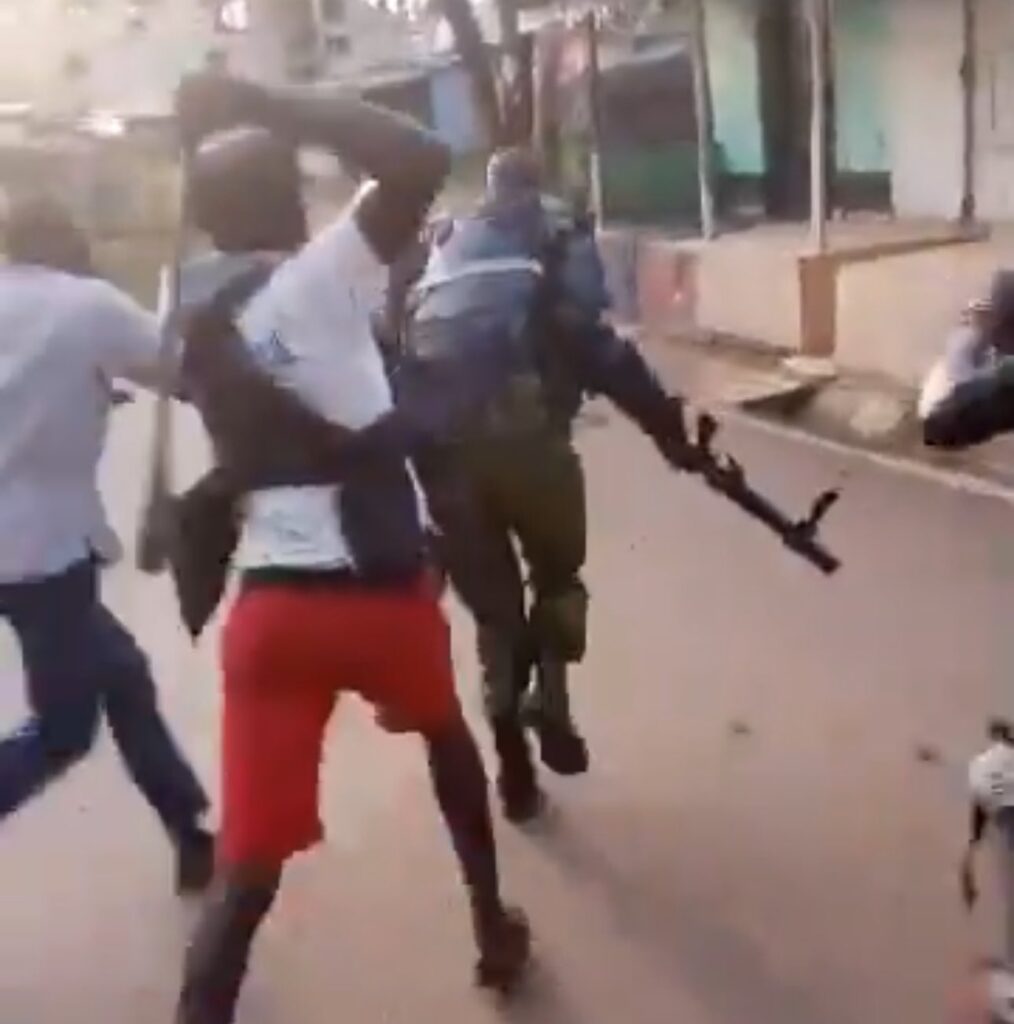Protesters swarmed the streets, their chants echoing off the buildings surrounding the parliament.
As the finance bill debate intensified inside, tensions outside reached a boiling point. The crowd, fueled by frustration and anger over perceived economic injustices, surged forward.
Amidst the chaos, a lone policeman found himself separated from his unit. Despite his efforts to maintain order, he was quickly overpowered by the throng of demonstrators.
Shouts turned to screams as fists flew and batons clashed against makeshift shields. The officer, trapped in a sea of hostility, struggled to protect himself.
He attempted to reason with the closest protestors, but his words were drowned out by the roar of the crowd.
Desperation set in as he felt blows raining down on him from all sides, the intensity of the attack reflecting the fury of those around him.
Nearby, his colleagues noticed the commotion and rushed to his aid, pushing through the mob with their shields held high.
The scene was a chaotic mix of movement and sound, with protestors and police officers locked in a violent struggle.
As the rescue team reached the besieged officer, they formed a protective barrier around him, gradually pushing the crowd back.
In the midst of this confrontation, the true scale of the public’s discontent became glaringly evident, a stark reminder of the deep divisions and grievances simmering just beneath the surface of society.
The incident, caught on numerous cell phones and broadcasted live on social media, quickly went viral.
It sparked a nationwide debate about the right to protest, police brutality, and the government’s handling of the finance bill.
The image of the battered officer became a symbol of the turmoil engulfing the nation, prompting calls for dialogue and reconciliation from various quarters.
In the days that followed, both the protestors and the authorities were forced to reckon with the consequences of that fateful day, as the country grappled with its fractured state.


